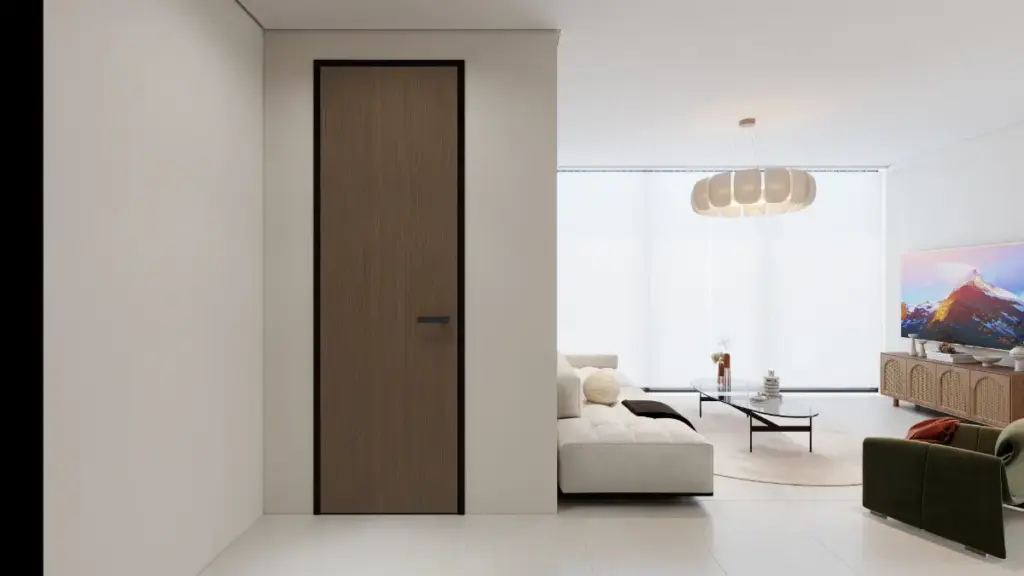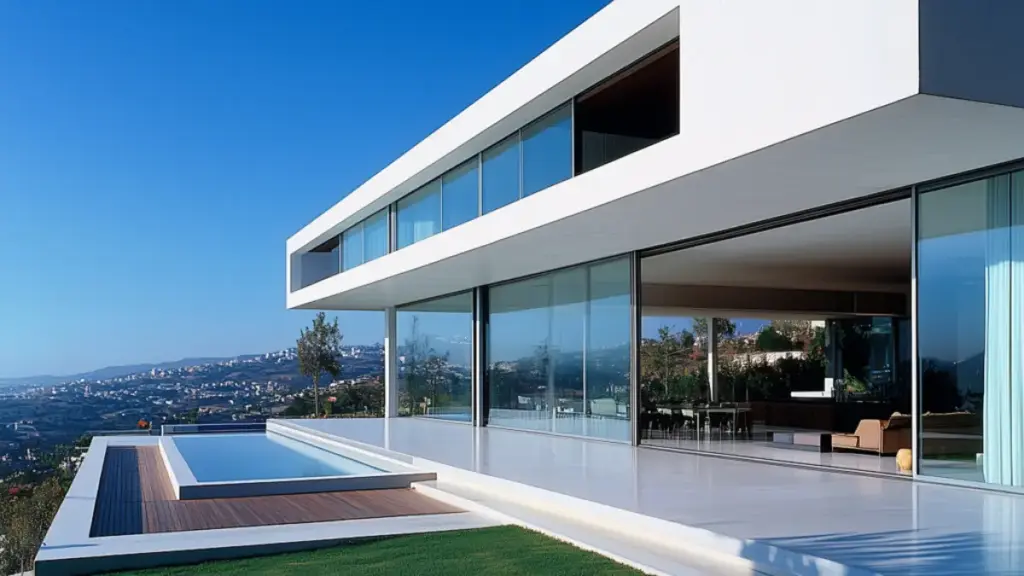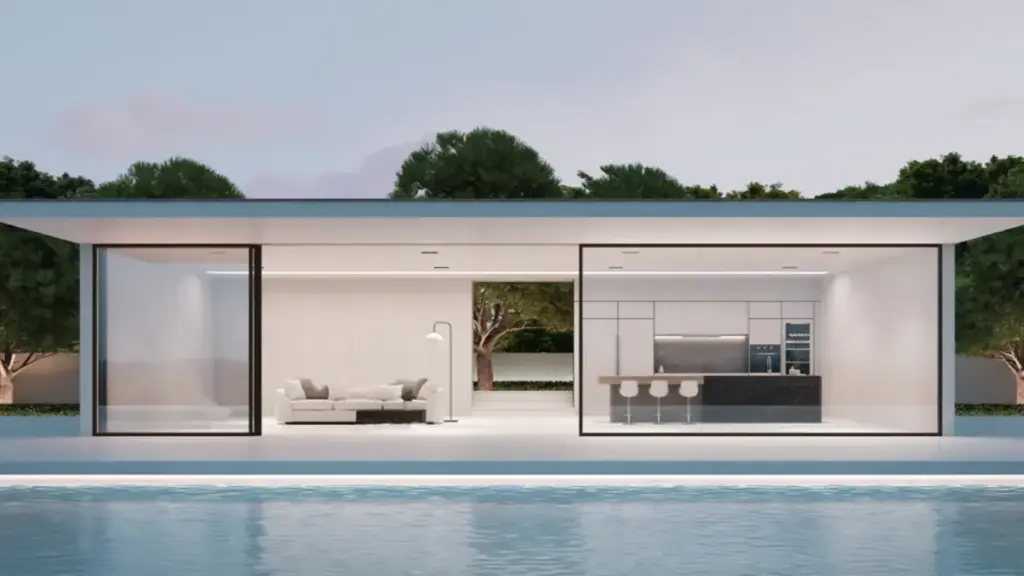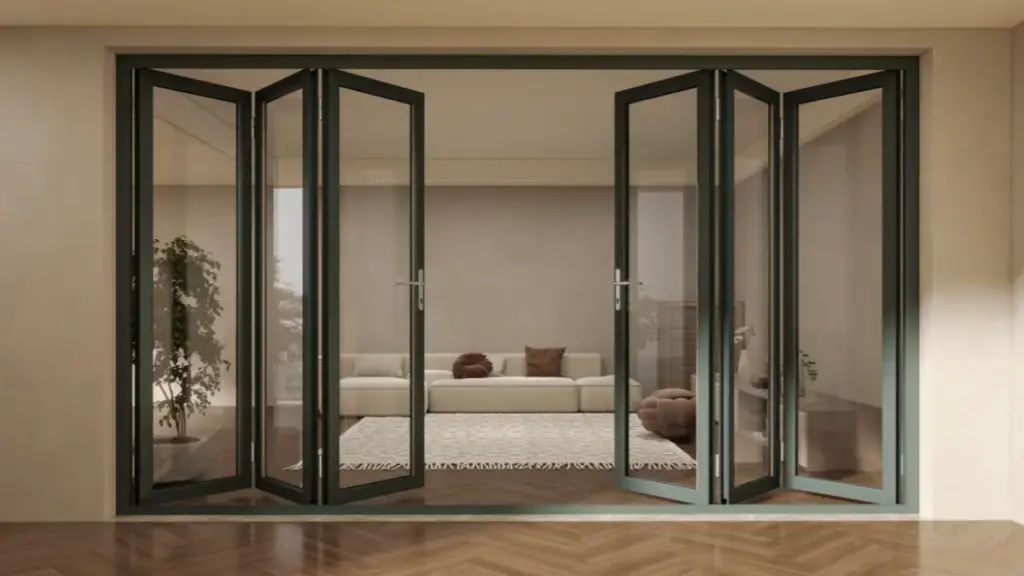When it comes to selecting glass for interior doors, many people fall into the trap of thinking that safety and transparency can never coexist. However, high-quality interior door glass has already broken this limitation. Aluminum glass doors, for example, are gaining popularity because of their ultra-narrow frames and sophisticated look. But when it comes to making a choice, the real dilemma often arises: should you go for frosted glass or the elegant long rainbow glass?
The good news is that there are many types of glass to choose from. In fact, your aluminum glass doors can be customized with different glass options, each offering its own unique look and benefits. Let’s explore the differences between them, with practical advice to help you make the right decision.
1. Clear Glass (Ultra Clear Glass)
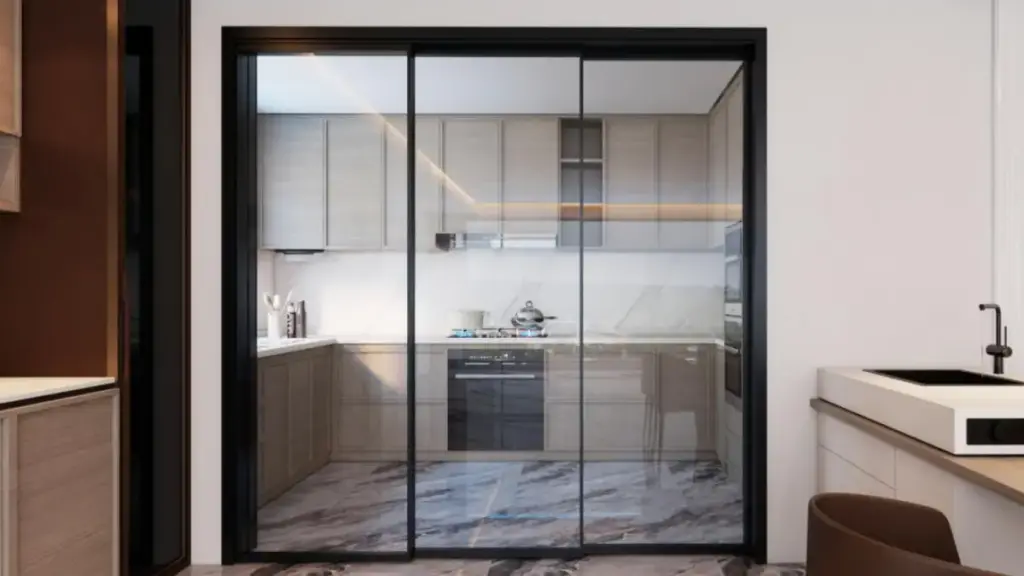
Features: Ultra-clear glass has an impressively high light transmission rate of over 91.5%. This means it can make any room feel bright and open, creating an airy, expansive atmosphere.
Best For: If your space suffers from limited natural light, ultra-clear glass is an excellent option. It improves light conditions and adds a fresh, modern feel to any room.
2. Tinted Glass (Tea and Grey Glass)

Features: Tinted glass adds subtle hues to ultra-clear glass, creating a sophisticated look that still allows for ample natural light. It’s an ideal balance between aesthetic appeal and practicality, reducing glare while maintaining brightness.
Best For: Tinted glass is particularly useful in creating a cozy, elegant atmosphere. It’s great for spaces like living rooms, bedrooms, or offices where a bit of privacy and warmth are desired. The darker tones also help to avoid the issue of bright sunlight disrupting the space.
When selecting between tea or grey glass, it’s essential to think about the overall feel of the room. Tea glass has a warm, vintage vibe, making it ideal for retro-themed spaces. Meanwhile, grey glass tends to create a more modern, minimalist look that fits perfectly in sleek, modern interiors.
3. Decorative Glass (Patterned Glass)
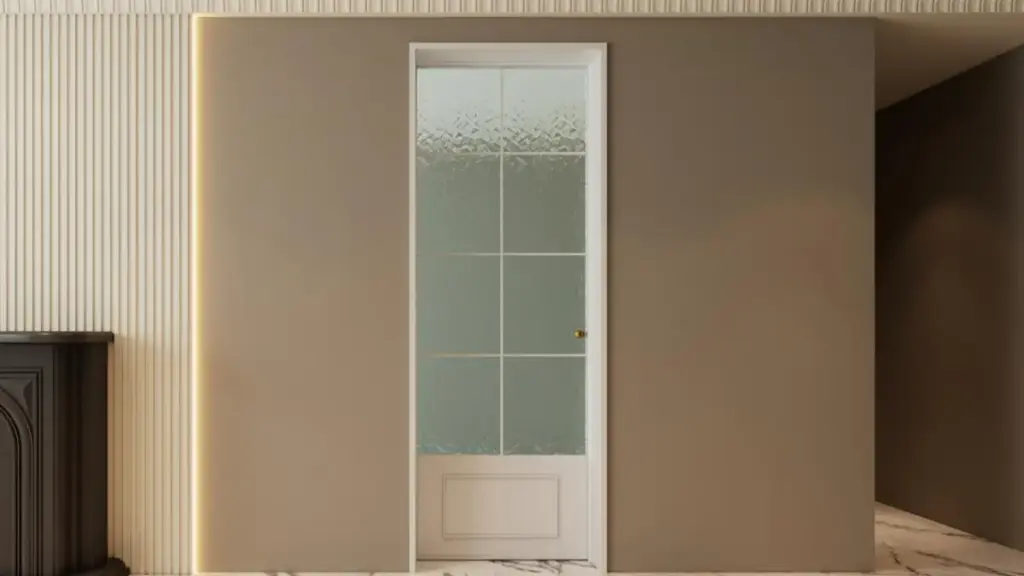
Features: Decorative glass comes in a variety of textures and patterns, including grid patterns, water ripple textures, stone motifs, and long rainbow styles. These artistic options can instantly add character to your space.
Best For: Patterned glass is perfect for areas like dining rooms, living rooms, or hallways where you want to divide spaces while maintaining a stylish visual appeal. The subtle designs add privacy while allowing light to pass through, making it a popular choice for partition doors.
4. Wired Glass (Wire-Embedded Glass)
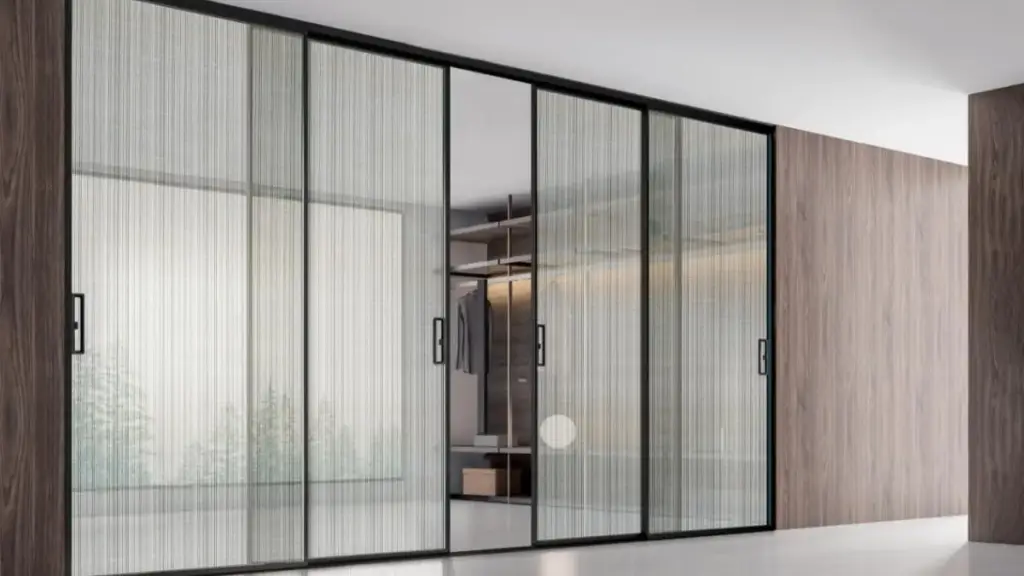
Features: Wired glass is made by embedding metal wires or other materials within the glass. This gives the glass a distinctive texture, enhancing its visual appeal while also offering extra strength.
Best For: This glass is often used in artistic spaces like galleries or studios, where both the aesthetic value and durability are important. It’s an excellent choice for spaces that need to strike a balance between style and security.
5. Frosted Glass (Sandblasted Glass)
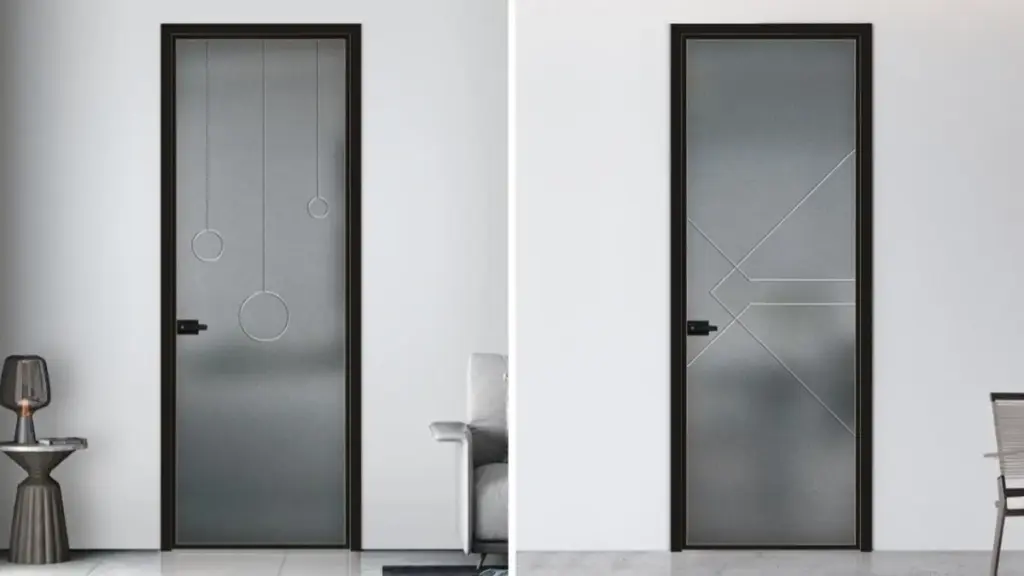
Features: Frosted glass is treated to create a matte, textured surface that obscures visibility, providing enhanced privacy. It’s the perfect solution for those who value personal space but don’t want to compromise on style.
Best For: Frosted glass is often chosen for bathrooms, bedrooms, or any room where privacy is paramount. It’s especially useful for spaces like shower rooms, where transparency isn’t desired but light flow is still important. It can also be used in combination with other types of glass, like patterned glass, for a more artistic look.
6. Frosted Opal Glass
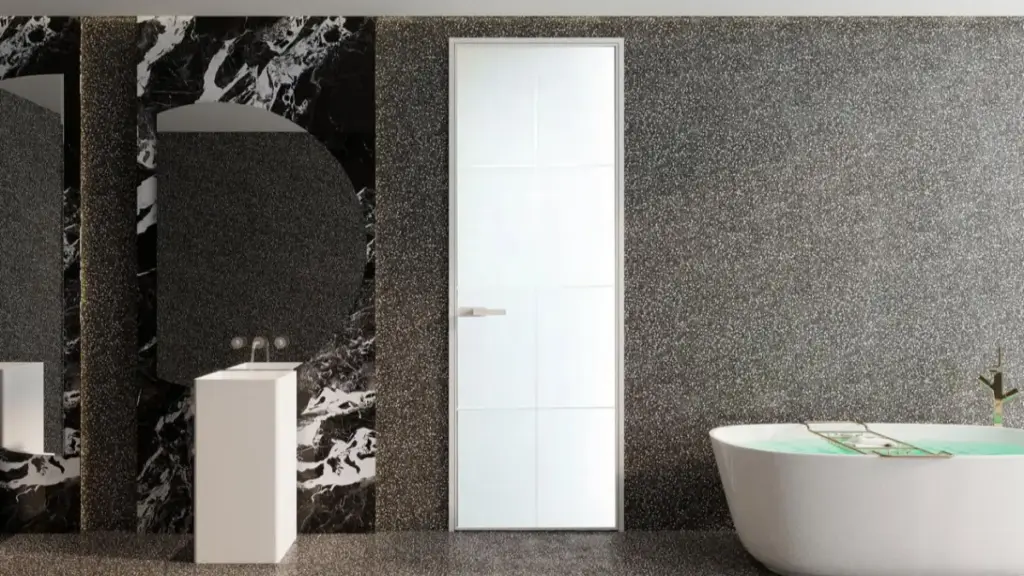
Features: Frosted opal glass, or “milky” glass, has a smooth, soft texture that enhances privacy even further than regular frosted glass. It’s less transparent, offering a higher level of concealment.
Best For: This type of glass is ideal for private spaces like bathrooms, changing rooms, or dressing rooms where maximum privacy is necessary. Its soft texture also gives it a luxurious feel, making it perfect for upscale or high-end interiors.
Why Choose Opuomen? The LOW-E+4SG Glass Combination
Choosing the right windows and doors directly impacts the quality of life. With energy efficiency becoming a top priority, performance upgrades are essential. This year, Opuomen Windows introduced the LOW-E+4SG glass combination, offering superior insulation and sun-blocking capabilities. This high-performance solution ensures better thermal regulation and UV protection for your home.
What is LOW-E Glass?
LOW-E (Low Emissivity) glass features a thin metallic coating that reflects heat, keeping it inside during winter and blocking it out during summer. This helps maintain a comfortable indoor temperature throughout the year. The layers of LOW-E glass typically consist of a medium layer, a barrier layer, and a functional layer (often containing silver).
Double-Silver LOW-E Glass: This variant consists of 9 or more layers, with two layers of pure silver.
Single-Silver LOW-E Glass: This type generally has 5 or more layers, including one layer of pure silver.
Single-Silver vs Double-Silver: Key Differences
When choosing between single-silver and double-silver LOW-E glass, there are key performance factors to consider:
Thermal Insulation and Heat Retention (U-Value)
- Single-Silver LOW-E Glass: The K-value (thermal conductivity) is around 1.8–2.0 W/(m²·K).
- Double-Silver LOW-E Glass: The K-value is lower, at 1.5–1.7 W/(m²·K), making it more energy-efficient.
This means double-silver LOW-E glass offers 15% better thermal insulation, keeping your home warmer in winter and cooler in summer.
Energy Efficiency (SC Value)
The solar heat gain coefficient (SC value) indicates how much heat from the sun passes through the glass.
- Single-Silver LOW-E Glass: SC value is 0.5–0.6.
- Double-Silver LOW-E Glass: SC value is ≤0.3.
This makes double-silver LOW-E glass more effective at blocking heat from the sun, thus improving energy efficiency.
UV Protection
The ability to block harmful UV rays is another important feature:
- Single-Silver LOW-E Glass blocks 85%–90% of UV rays.
- Double-Silver LOW-E Glass offers higher protection, blocking 90%–95% of UV rays.
This enhanced UV resistance helps protect your furniture and interiors from fading and deterioration over time.
Make the Best Choice for Your Home
Your choice between single-silver and double-silver LOW-E glass should depend on your location’s climate.
- For extreme climates (where winters are cold and summers are hot), double-silver LOW-E glass is the best choice due to its superior thermal insulation and sun-blocking properties.
- For milder climates (where winters are moderate and summers are not as intense), single-silver LOW-E glass provides excellent performance at a more affordable price.
By opting for LOW-E+4SG glass, you’re investing in a product that not only enhances your home’s insulation but also provides better UV protection and overall comfort.
So, have you decided which glass type is right for your home? Whether you’re in a climate with extreme weather or one that’s more temperate, the right glass can significantly improve your living experience. Let us help you choose the best solution for your needs!

